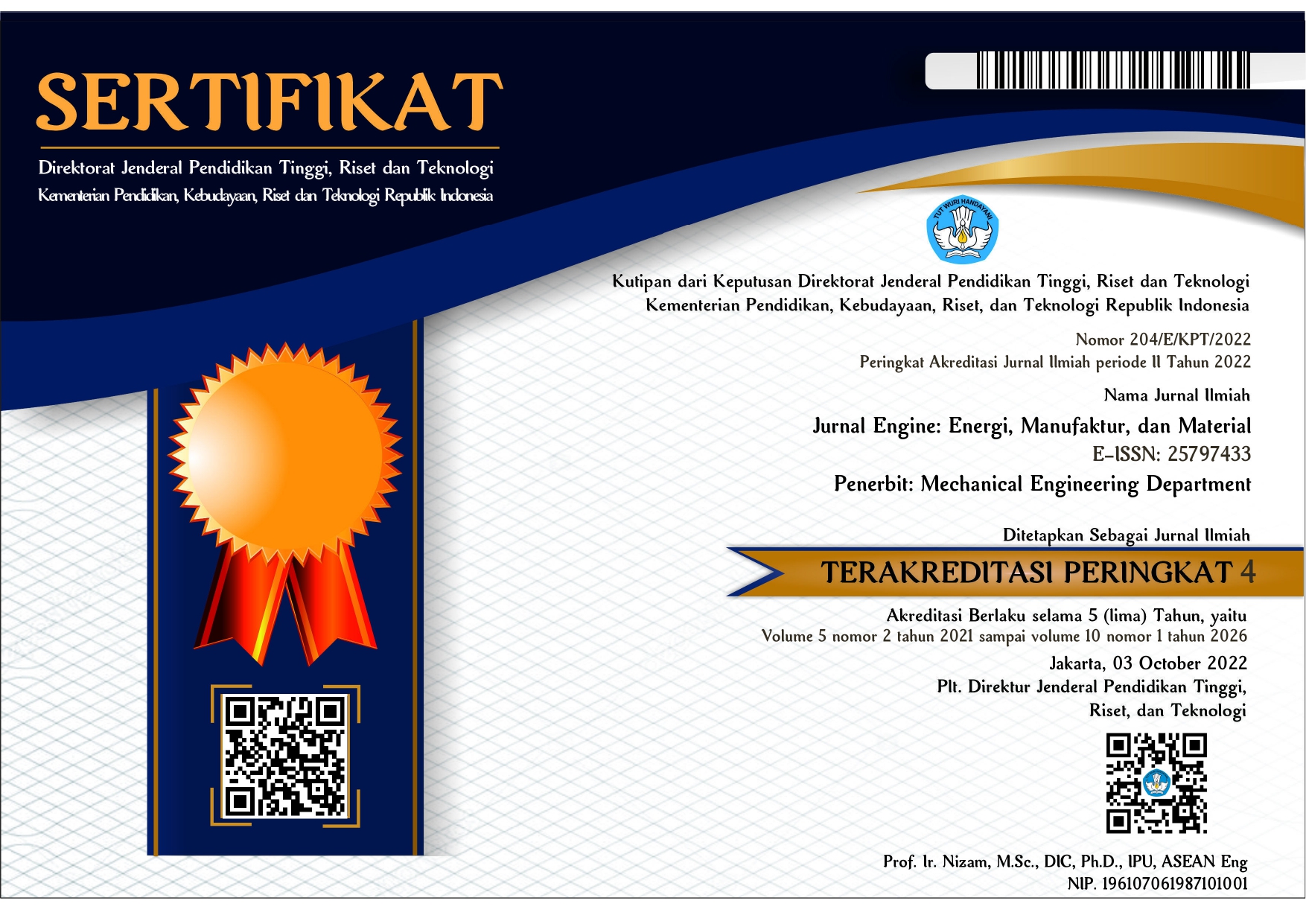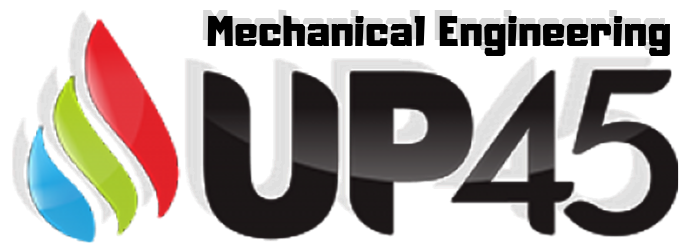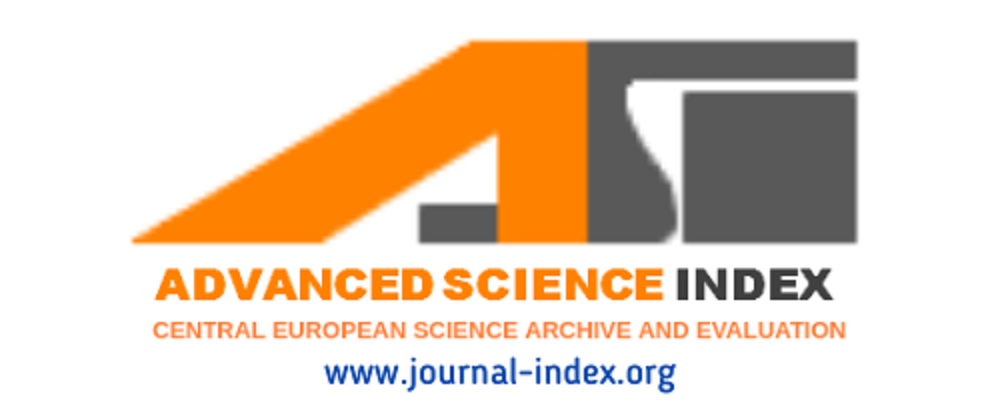Evaluasi Pemodelan Augmentasi Data Sifat Mekanik Aluminium Menggunakan Generative Adversarial Networks
(1) Universitas Muhammadiyah Sumatera Barat
(2) Universitas Muhammadiyah Sumatera Barat
(3) Universitas Muhammadiyah Sumatera Barat
(4) Politeknik Negeri Padang
(5) Politeknik Negeri Padang
(*) Corresponding Author
Abstract
Materials informatics is a new approach in material science that integrates information technology and material science to optimize the discovery of new materials more efficiently and innovatively. In materials informatics, experimental and simulation data are combined with data-driven methods such as big data, data augmentation, and machine learning to gain a deeper understanding of material properties. However, limitations in the availability of samples with desired characteristics and the lack of accurate experimental data pose challenges in materials informatics. In this study, we attempt to address these challenges by modeling the augmentation of mechanical properties of aluminum using Generative Adversarial Networks (GAN). GAN is used to generate synthetic data of aluminum's mechanical properties that closely resemble experimental data. This modeling is trained using experimental testing data consisting of aluminum's mechanical properties and chemical elements in the alloy, obtained from the material database. The dataset comprises 9 chemical element variables in the aluminum alloy and 2 mechanical property variables. The synthetic data generated from the modeling is evaluated using descriptive statistics, Pearson correlation, and Kolmogorov-Smirnov (KS) test to assess the extent to which the synthetic data resembles the original data. The evaluation results indicate that the distribution of synthetic data is similar to the original data. The Pearson correlation results show that most variables of chemical elements and mechanical properties of aluminum in the synthetic data have a correlation that is quite similar to the original data. The KS test results also indicate that the distribution of synthetic data does not significantly differ from the distribution of the original data. This indicates that the synthetic data generated has a high resemblance to the experimental data, enabling its use in materials informatics research. Thus, modeling the augmentation of aluminum's mechanical property data using GAN provides a significant contribution to expanding data availability in material science.
Keywords
Full Text:
PDFReferences
Agrawal, A., Deshpande, P. D., Cecen, A., Basavarsu, G. P., Choudhary, A. N., & Kalidindi, S. R. (2014). Exploration of data science techniques to predict fatigue strength of steel from composition and processing parameters. Integrating Materials and Manufacturing Innovation, 3(1), 90–108. https://doi.org/10.1186/2193-9772-3-8
Arif, A. F. ., Sheikh, A. ., & Qamar, S. . (2003). A study of die failure mechanisms in aluminum extrusion. Journal of Materials Processing Technology, 134(3), 318–328. https://doi.org/10.1016/S0924-0136(02)01116-0
Ashkenazi, D. (2019). How aluminum changed the world: A metallurgical revolution through technological and cultural perspectives. Technological Forecasting and Social Change, 143, 101–113. https://doi.org/10.1016/j.techfore.2019.03.011
Berger, V. W., & Zhou, Y. (2014). Kolmogorov–Smirnov Test: Overview. In Wiley StatsRef: Statistics Reference Online. Wiley. https://doi.org/10.1002/9781118445112.stat06558
Blaiszik, B., Ward, L., Schwarting, M., Gaff, J., Chard, R., Pike, D., Chard, K., & Foster, I. (2019). A data ecosystem to support machine learning in materials science. MRS Communications, 9(4), 1125–1133. https://doi.org/10.1557/mrc.2019.118
Fonseca, J., & Bacao, F. (2023). Tabular and latent space synthetic data generation: a literature review. Journal of Big Data, 10(1), 115. https://doi.org/10.1186/s40537-023-00792-7
Frydrych, K., Karimi, K., Pecelerowicz, M., Alvarez, R., Dominguez-Gutiérrez, F. J., Rovaris, F., & Papanikolaou, S. (2021). Materials Informatics for Mechanical Deformation: A Review of Applications and Challenges. Materials, 14(19), 5764. https://doi.org/10.3390/ma14195764
He, G., Zhao, Y., & Yan, C. (2022). Application of tabular data synthesis using generative adversarial networks on machine learning-based multiaxial fatigue life prediction. International Journal of Pressure Vessels and Piping, 199, 104779. https://doi.org/10.1016/j.ijpvp.2022.104779
Hwang, J. Y., Banerjee, R., Doty, H. W., & Kaufman, M. J. (2009). The effect of Mg on the structure and properties of Type 319 aluminum casting alloys. Acta Materialia, 57(4), 1308–1317. https://doi.org/10.1016/j.actamat.2008.11.021
Koc, K., & Gurgun, A. P. (2022). Scenario-based automated data preprocessing to predict severity of construction accidents. Automation in Construction, 140, 104351. https://doi.org/10.1016/j.autcon.2022.104351
Lall, A. (2015). Data streaming algorithms for the Kolmogorov-Smirnov test. 2015 IEEE International Conference on Big Data (Big Data), 95–104. https://doi.org/10.1109/BigData.2015.7363746
Leni, D. (2023). Pemilihan Algoritma Machine Learning Yang Optimal Untuk Prediksi Sifat Mekanik Aluminium. Jurnal Engine:Energi, Manufaktur, Dan Material, 7(1), 35–44.
Leni, D., Earnestly, F., Sumiati, R., Adriansyah, A., & Kusuma, Y. P. (2023). Evaluasi sifat mekanik baja paduan rendah bedasarkan komposisi kimia dan suhu perlakuan panas menggunakan teknik exploratory data analysis (EDA). Dinamika Teknik Mesin, 13(1), 74. https://doi.org/10.29303/dtm.v13i1.624
Leni, D., Muchlisinalahuddin, M., Maimuzar, M., Haris, H., & Hendra, H. (2023). Analisis Heatmap Korelasi dan Scatterplot untuk Mengidentifikasi Faktor-Faktor yang Mempengaruhi Pelabelan AC efisiensi Energi. Jurnal Rekayasa Material, Manufaktur Dan Energi, 6(1). https://doi.org/10.30596/rmme.v6i1.13133
Leni, D., Yermadona, H., Usra Berli, A., Sumiati, R., & Haris, H. (2023). Pemodelan Machine Learning untuk Memprediksi Tensile Strength Aluminium Menggunakan Algoritma Artificial Neural Network (ANN). Jurnal Surya Teknika, 10(1), 625–632. https://doi.org/10.37859/jst.v10i1.4843
Li, D.-C., Chen, S.-C., Lin, Y.-S., & Huang, K.-C. (2021). A Generative Adversarial Network Structure for Learning with Small Numerical Data Sets. Applied Sciences, 11(22), 10823. https://doi.org/10.3390/app112210823
Marani, A., Jamali, A., & Nehdi, M. L. (2020). Predicting Ultra-High-Performance Concrete Compressive Strength Using Tabular Generative Adversarial Networks. Materials, 13(21), 4757. https://doi.org/10.3390/ma13214757
Matmach. (n.d.). matmach. Retrieved July 15, 2022, from https://matmatch.com/advanced-search?categories=aluminium&properties=tensile-strength,yield-strength&header=tensile-strength,yield-strength&units-system=imperial
Morini, A. A., Ribeiro, M. J., & Hotza, D. (2019). Early-stage materials selection based on embodied energy and carbon footprint. Materials & Design, 178, 107861. https://doi.org/10.1016/j.matdes.2019.107861
Rajan, K. (2015). Materials Informatics: The Materials “Gene” and Big Data. Annual Review of Materials Research, 45(1), 153–169. https://doi.org/10.1146/annurev-matsci-070214-021132
Rawal, A., Kumar, R., & Saraswat, H. (2012). Tensile mechanics of braided sutures. Textile Research Journal, 82(16), 1703–1710. https://doi.org/10.1177/0040517512445340
Sert, E., Öchsner, A., Hitzler, L., Werner, E., & Merkel, M. (2019). Additive Manufacturing: A Review of the Influence of Building Orientation and Post Heat Treatment on the Mechanical Properties of Aluminium Alloys (pp. 349–366). https://doi.org/10.1007/978-3-030-30355-6_14
Tsai, Y.-C., Chou, C.-Y., Lee, S.-L., Lin, C.-K., Lin, J.-C., & Lim, S. W. (2009). Effect of trace La addition on the microstructures and mechanical properties of A356 (Al–7Si–0.35Mg) aluminum alloys. Journal of Alloys and Compounds, 487(1–2), 157–162. https://doi.org/10.1016/j.jallcom.2009.07.183
Wang, K., Gou, C., Duan, Y., Lin, Y., Zheng, X., & Wang, F.-Y. (2017). Generative adversarial networks: introduction and outlook. IEEE/CAA Journal of Automatica Sinica, 4(4), 588–598. https://doi.org/10.1109/JAS.2017.7510583
Ye, J., Li, J., Luo, H., Tan, J., Chen, X., Feng, B., Zheng, K., & Pan, F. (2022). Effect of micron-Ti particles on microstructure and mechanical properties of Mg–3Al–1Zn based composites. Materials Science and Engineering: A, 833, 142526. https://doi.org/10.1016/j.msea.2021.142526
Yu, D., Zhang, H., Chen, W., Yin, J., & Liu, T.-Y. (2021). How Does Data Augmentation Affect Privacy in Machine Learning? Proceedings of the AAAI Conference on Artificial Intelligence, 35(12), 10746–10753. https://doi.org/10.1609/aaai.v35i12.17284
DOI: https://doi.org/10.30588/jeemm.v8i1.1645
Article Metrics
Abstract view : 47 timesPDF - 3 times
Refbacks
- There are currently no refbacks.
Copyright (c) 2024 Desmarita Leni, Haris Haris

This work is licensed under a Creative Commons Attribution 4.0 International License.

Jurnal Engine: Energi, Manufaktur, dan Material is licensed under a Creative Commons Attribution 4.0 International License.




.jpg)


















